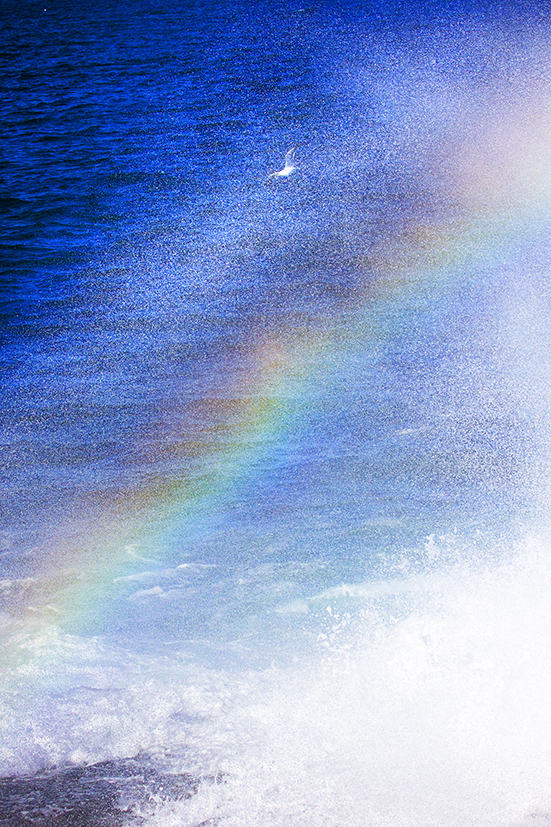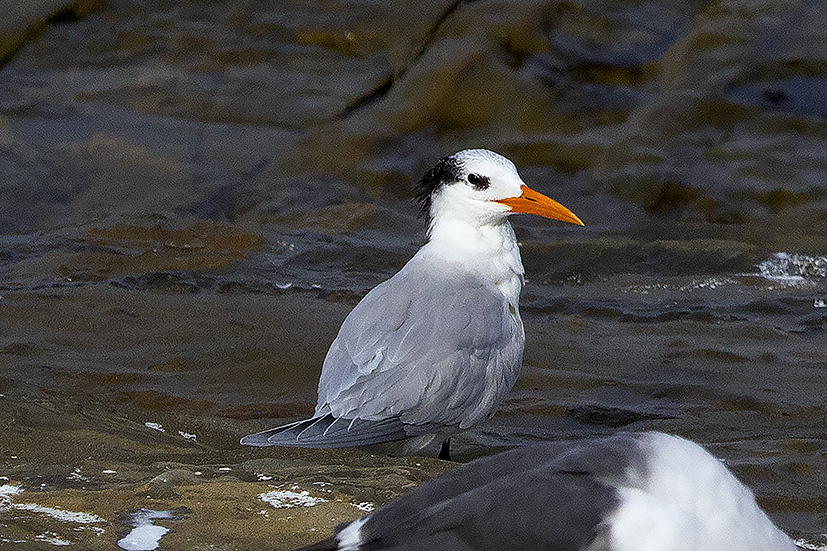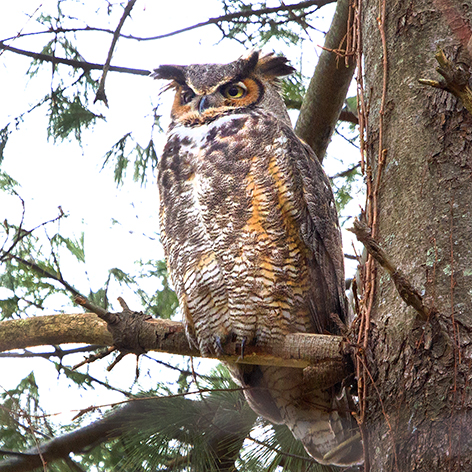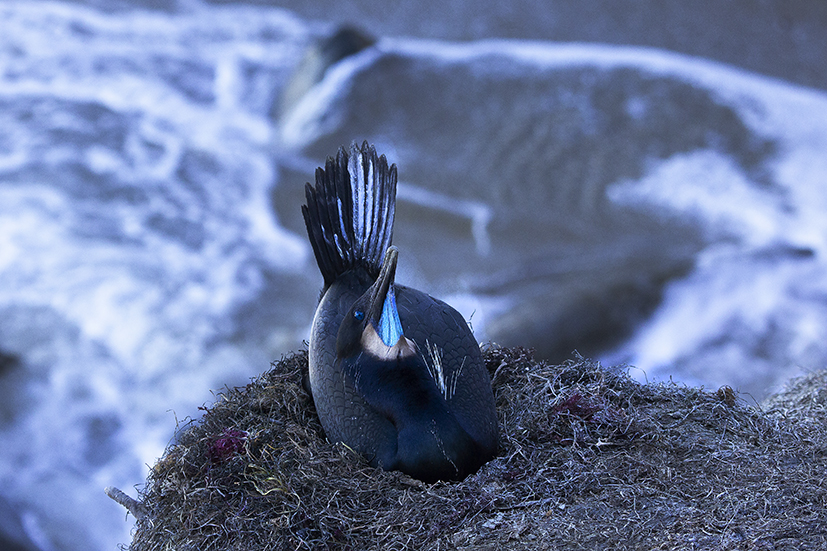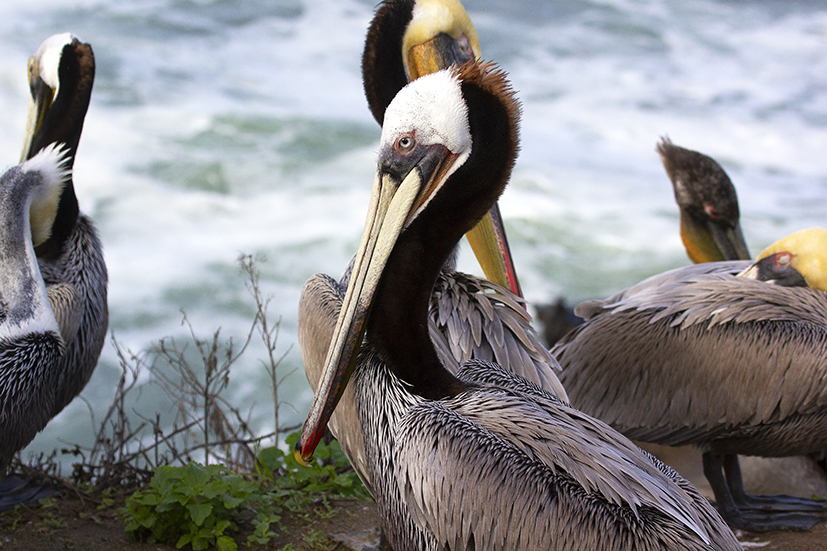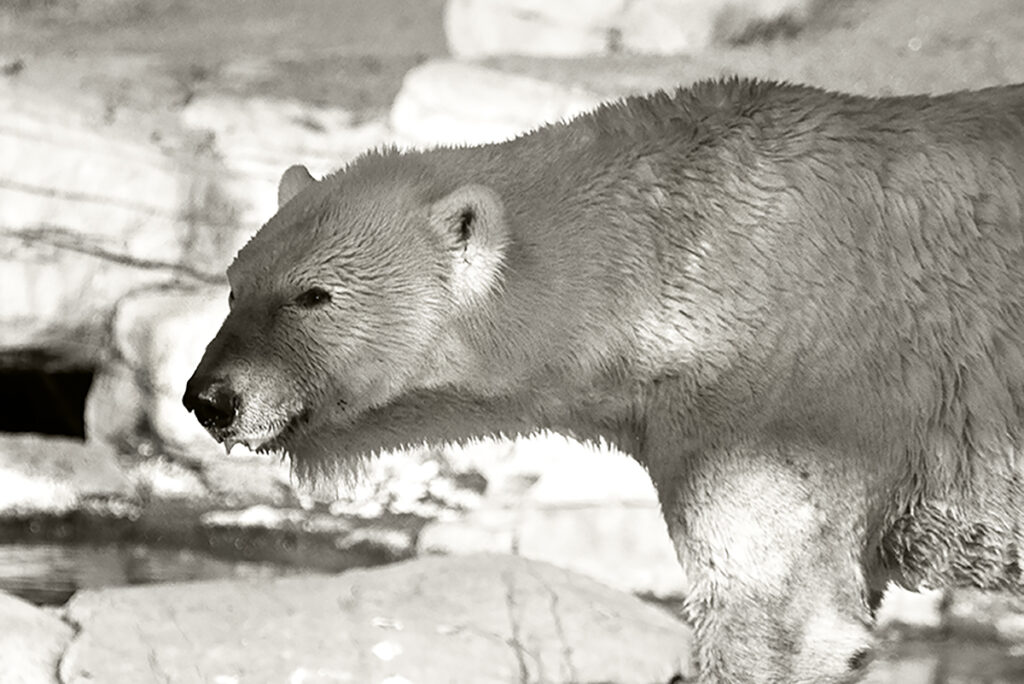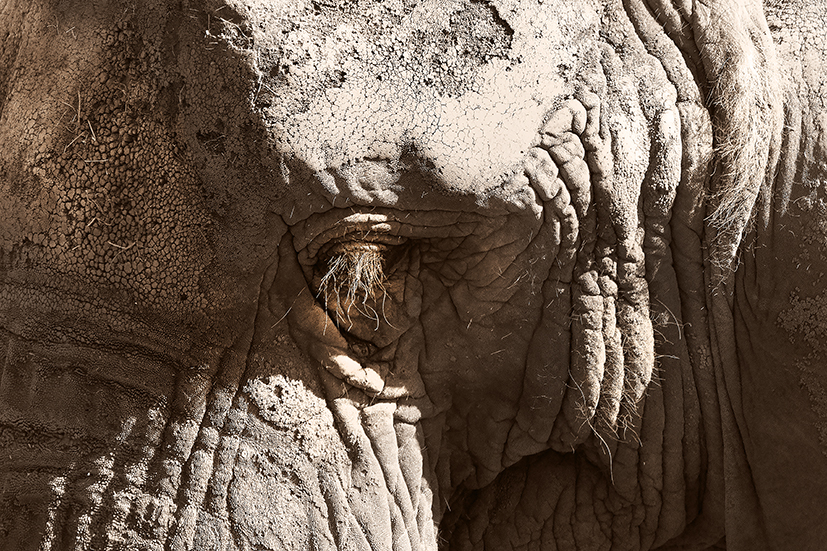The littoral zone is both physically and spiritually where the sea meets the land and the sky meets the sea. It is the glory and prize at the end of a rainbow. I spent quite a while trying to capture the image of Figure1. My Canon is not super fast. There is a noticeable delay between pressing the shutter and when the shutter actually opens. So it becomes a matter of guessing and anticipation. I tried to capture the “rainbow” in the sea foam, trying to time it just right. Here a low seagull accentuates the background, fuzzed out by billions of spray droplets.
Canon T2i with EF 100-400 mm f/4.5-5.6 L IS USM lens at 100 mm, 1/4000 th sec at f/7.1, ISO 800, Aperture Priority AE mode.

